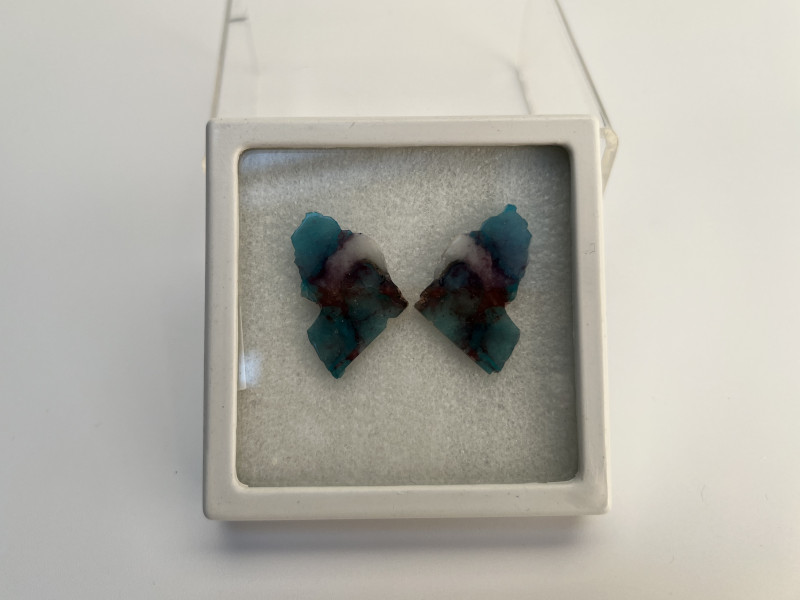Characterised by its blue-green colour palette, the Paraiba gemstone is a tourmaline which was first discovered in the 1980s in Brazil and has since been found in Nigeria and Mozambique (although the story of how these came to fall under the same market name is a tale all of its own).
Now considered one of the rarest stones in the world, this article considers the history, origin, and future of the Paraiba gemstone as a high-value investment piece – before comparing it to the iconic diamond.
Origins of the Paraiba Gemstone and where is it found?
Having been discovered in the 1980s, the history and origin story of the Paraiba gemstone is not a particularly lengthy one – however, it is filled with controversy and upheaval. While the first stones were found in Brazil, it was when aesthetically identical stones were found in Nigeria and Mozambique that questions were raised about the origin and components found in the Paraiba gemstone.
Despite some name changes and division in the industry, in 2006 it was decided that the Paraiba (full name ‘Paraiba Tourmaline’) stone encompasses those found in the original site as well as the later sites in Africa.
Today, the Paraiba stone is used in high-end, luxury jewellery and is coveted by collectors who use the colour scale and grading to assign value to each and every stone that is found.
Why is the Paraiba stone considered rarer than diamonds?
The rarity of the Paraiba stone comes from its scarcity on the market – that is, there have not been many occasions during which the stone has been mined since it was first discovered in the 1980s, and so there are only a limited number of stones out there on the market.
While diamonds are a high-value and highly coveted stone which is used in jewellery across a range of luxury brands, the wide selection of available diamonds (not to mention the lab-grown diamonds now competing on the luxury market) downplay the rarity of the stone in comparison with Paraiba.
To put this into context and into numbers, for every 10,000 diamonds mined there is just one Paraiba stone that is found and extracted.
The most important feature of the Paraiba stone
When it comes to value and status on the market, the Paraiba stone is noted not for its clarity but rather for its colour. The blue/green stones are the most popular and garner the highest levels of interest on the market, with pure blue or green stones fetching less at auction and on the market.
Interestingly, this colour comes from the high copper content – giving them a definitive glow which, when held up by the light, shines through and brings all the coloured flecks in the stone to life.
Other features of a Paraiba stone
In addition to the colour of the stone, other notable things to consider are the size and cut of the stone – with Love Luxury currently holding a unique stone which was found and mined in the shape of a perfectly reflected butterfly. This stone equals a total weight of 37.5 carats and is presented in a small box for aesthetic value and care.
How is the Paraiba stone graded?
Paraiba stones are graded using their colour, with clarity not something that is considered. Combining the colour of a stone with its size and weight allows it to be placed on the grading scale, with the brighter and more neon-like colours fetching higher prices in terms of the financial value of the stone.
To look at any Paraiba stone is to see the natural world at its most magnificent, with the vibrancy of the gemstones creating demand which pushes the price of each stone skywards. On top of this, it is worth considering that this incredible demand and the market status of the Paraiba stone have been created in the short few years since the stone was first discovered in the 1980s – remarkable when compared with diamonds which have been around for centuries.
How much has a Paraiba stone sold for in the past?
You won’t be surprised to hear that Paraiba stones have fetched some incredibly high prices at the market, with a 2022 auction fetching $2.78 million for a pair of Paraiba tourmaline earrings with a carat weighting of 7.46 and 7.81 carats respectively. This was a record for any semi-precious stone being sold at auction.
A few other facts to consider about Paraiba stones are that one of the largest stones ever found was gifted to and belongs to the Pope, who had it set in a ring, and that the scarcity of the stone itself is down to the fact that Paraiba only forms in the copper-rich ground as found in Brazil, Nigeria, and Mozambique.
How can I get my hands on a Paraiba stone?
Because the mining of the Paraiba Tourmaline stone has been so infrequent, the number of stones on the market makes it exceptionally difficult to get your hands on one. Here at Love Luxury, we pride ourselves in the broad selection of designer jewels and luxury accessories that we buy and sell as part of our commitment to preloved luxury – with the occasional Paraiba stone passing through our store before often selling for an even higher price, including the stunning butterfly wings, mentioned earlier in this article.
To find out more about the jewellery we sell, and to discuss the pieces we do have in, whether from the Paraiba or diamond range, get in touch with our Knightsbridge-based team. You can also get in touch to discuss luxury jewellery valuation and authentication services, or to find your next luxury investment piece.
